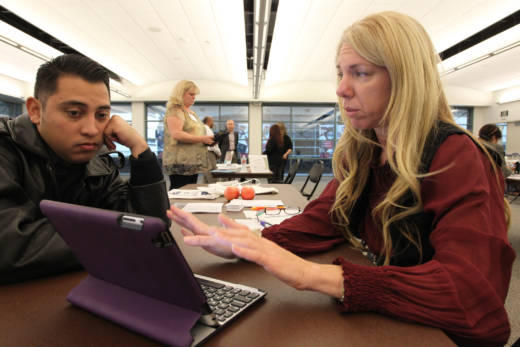“Because of the new administration and the high likelihood of changes coming to the ACA, it is creating a sense of urgency” for people to enroll, said Michael Marchand, director of communications for the Washington Health Benefit Exchange. Enrollment exceeded 170,000 customers on the Washington exchange as of this week, up 13 percent compared to same time a year ago.
Other state exchanges saw moderate increases: Connecticut, 3 percent; Idaho, 4 percent; Maryland, 1 percent. California’s enrollment is about same as a year ago. Rhode Island’s enrollment dropped to 27,555 from 31,900 for the same period last year. State exchange officials cited a drop in customers who were automatically renewed because UnitedHealthcare dropped out.
About 12.7 million people enrolled in the state and federal exchanges for 2016 coverage at the end of the previous enrollment season. HHS predicted in October that an additional 1.1 million people would sign up for 2017 coverage. Burwell said Wednesday that her department is sticking with that projection, even though “the headwinds have increased” since the election.
Obamacare, now in its fourth open enrollment season, took some heavy blows this year after several big insurers — including UnitedHealthcare, Humana and Aetna — withdrew from many marketplaces for 2017 because of heavy financial losses. At the same time, remaining insurers increased premiums by 25 percent on average.
All of that, plus a changed political climate in Washington, was expected to dampen enrollment. While the surprise presidential election outcome may have been the primary force for changing those expectations, other factors also have fueled enrollment growth this fall, state officials pointed out in interviews.
More people who don’t qualify for government subsidies are buying health plans on the exchanges because it’s an easier way to compare available plans in one place. Noting that trend, Premera Blue Cross in Washington recently stopped selling individual coverage off the exchange.
In Minnesota, higher government subsidies — which reduce premiums for people with lower incomes — is the main reason why more people have signed up, according to Allison O’Toole, CEO of MNsure, the state-run exchange. The subsidy amount is tied to the cost of the second-lowest silver plan on the exchange, so as premiums rise for that plan, the subsidy rises too. Premiums soared by an average 50 percent in Minnesota for second-lowest silver.
Another factor driving earlier enrollment in that state was caps set by several Minnesota insurers on the number of new enrollees they would accept. People signed up earlier to make sure they could get the plan they wanted, according to O’Toole.
Minnesota’s growth is surprising because one of its biggest carriers, Blue Cross and Blue Shield of Minnesota, stopped selling its most popular health plan on the exchange. That forced about 20,000 people to change insurers or switch from Blue Cross’ PPO, which has a broad provider network, to its HMO plan with a narrower network.
In Colorado, the 18 percent increase in enrollment so far has exceeded officials’ expectations, said Luke Clarke, the spokesman for Connect for Health Colorado, the state exchange. “We had an office pool and no one picked a number that high,” he said. “It was a healthy surprise,” particularly because premiums increased in the state by about 20 percent on average.
Conservatives warn it’s still too early for Obamacare supporters to celebrate.
“I suspect that some states saw big increases because local advocacy groups were able to tell their constituents that they should enroll before Trump is sworn in and Republicans take over Congress — thereby pretty much guaranteeing that they get a full year’s coverage regardless of what Republicans might do on repeal,” said Joe Antos, a health economist with the American Enterprise Institute, a conservative think tank.
Under that scenario, large enrollment increases this fall might be followed by a dropoff in January over the 2016 numbers and the final enrollment tally could end up similar this year’s, he said. Antos noted the true enrollment figures will be known once people pay for their coverage and stay enrolled for the full year.
“As with everything related to ACA,” Antos said, “it’s easy to find a happy story if you squint hard enough and don’t wait for the enrollment process to complete — or the plan year to end.”
Kaiser Health News (KHN) is a national health policy news service. It is an editorially independent program of the Henry J. Kaiser Family Foundation.
